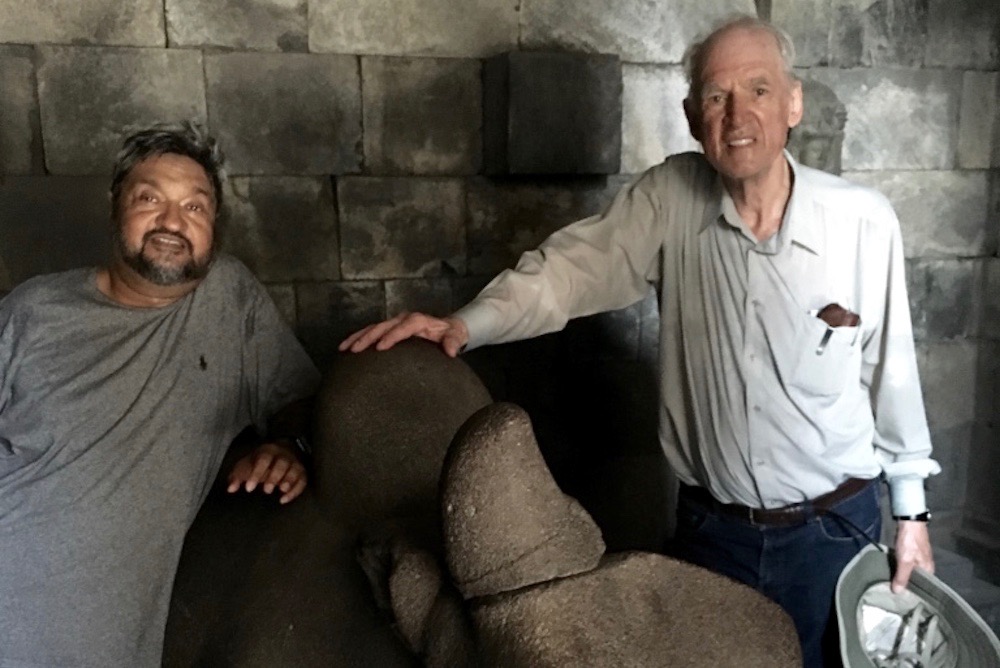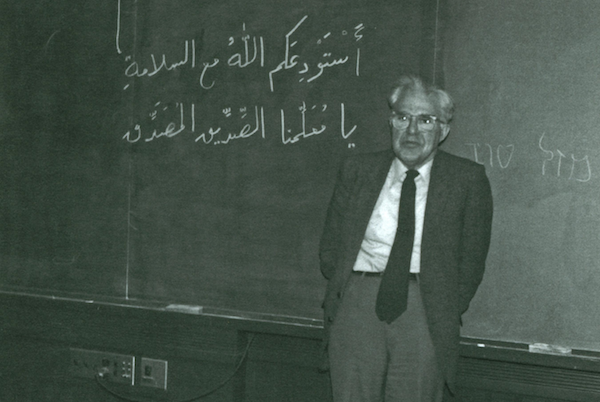
It was, fittingly, through Hegel that I first met Charles Taylor in Oxford. In 1977, I began a post-graduate thesis on Hegel. In love with Western Marxism at that time, I thought my attraction to Hegel was because he was Marx’s illustrious predecessor. But later I realized that he was appealing also because his philosophy resonated with traditions of Hindu thought that were part of my childhood. In particular, I found in both Hegel and Indian thought an impulse not to abolish things, practices, or relations but see their value and find a place for them in the larger whole. Forty years ago, I couldn’t possibly know that these two seemingly opposite attractions would bring me a friendship and a transcontinental exchange of ideas that would result in a new way of understanding modernity itself.
As I finished my first draft, lousy from start to finish, I learned that Charles Taylor—a professor whose name I’d learned two years before, when I overheard Bernard Williams tell a friend that he was among the more exciting philosophers of his generation—had written a masterly book on Hegel. I soon met Taylor and nervously asked him if he would have a quick look at my very patchy tract, which ridiculously didn’t even mention him. He showed such compassion and balance of judgment that I was instantly drawn both to the man and the scholar. I later read the first chapter of his 1975 book Hegel, in my view one of the best ever in the history of philosophical ideas. It changed my life. I knew I had found my guru.
The next time I met Taylor was in India in 1981. He had come to deliver a set of three lectures on social theory as practice, at the Centre for the Study of Developing Societies, Delhi. The Centre had long been a critic of western modernity. Some fellows there searched for an alternative “Indian” modernity. Taylor was excited and challenged by the atmosphere and his lectures were brilliant, original, and delivered with mastery.
At that time, I was at the other end of the political spectrum, teaching Taylor’s Hegel in Jawaharlal Nehru University, home to every shade of left group, vehemently critical of capitalism but deep in the throes of the western modernist project of Marx. At JNU the name of CSDS was unmentionable; the scholars there were denounced as “reactionary” for using Indian cultural traditions for the study of Indian politics and society.
I took Taylor away to teach Hegel to my students, subconsciously hoping I was also disconnecting him from the ‘conservative’ CSDS. But, ironically, his very presence at the Centre lifted it in my eyes (and perhaps eventually led me to quit JNU and join the CSDS decades later).
At the same time, the Centre revived Taylor’s interest in India. Over the years India’s rich diversity tremendously impacted him, and quite definitely shaped his appreciation of diversity, and that in turn had an enormous impact on Indian scholars like myself.
In order to understand this story of trans-hemispheric intellectual exchange, you have to go back quite a long ways. In the 1940s, a Marxist named Wilfred Cantwell Smith lived in Aligarh and Lahore studying Islam but also throwing himself wide open to the world of ancient Hindu traditions with their mind-boggling diversity. Cantwell Smith found that ordinary Hindus do not aspire to unity and are content to cherish their diversity as it is. Himself a Protestant, Cantwell Smith perfected the art of looking at religious traditions from the perspective of those who lived them, from the inside. Years later in the mid-1990s, when I was studying the ways that Indian secularism differs from European and American secularism, I was stunned by the insights of Cantwell Smith’s masterpiece, The Meaning and End of Religion. I was even more stunned when I excitedly began telling Charles Taylor about my discovery. Not only did he know the book well, but Cantwell Smith had been one of his more influential teachers.
This discovery came amidst decades of discussion of the issue of secularism in India beginning in the late 1980s. I published two long pieces on the subject in 1990-1991. After that, Taylor and I began discussing it regularly. Around 1994, we met with sociologist Nilüfer Göle and a little later the religion sociologist José Casanova to discuss the issue in other countries and contexts. In 1997, I edited and published a collection of essays called Secularism and Its Critics, which was when Taylor wrote on secularism for the first time in an essay called “Modes of Secularism.” At that time, the issue of secularism was important predominantly in India and Turkey, but after 9/11 its importance elsewhere shot through the roof. In 2007, Taylor published A Secular Age, which completely transformed the terms of the debate by taking us to an altogether different level of secularity, one presupposed by western secularization and political secularism.

Wilfred Cantwell Smith at Harvard University.
It took a true exchange of ideas between scholars and traditions to move this important philosophical conversation forward. Taylor always generously claims that his understanding of political secularism is influenced by my work on the diversity-oriented Indian secularism. But without Taylor’s theoretical work, a conception of distinctive Indian secularism as, among other things, a response to religious diversity rather than as born out of battles with the church could not have emerged. All of these ideas came into play when I wrote The Promise of India’s Secular Democracy in 2010.
So how did this happen? I think that India’s rich diversity originally had an impact on Taylor via Cantwell Smith. And he in turn has influenced innumerable people like myself in understanding the meaning and significance of diversity. What Smith received from India, he passed on to Taylor, and what Taylor received from Smith, he passed on to Indians like me. And so on. These intellectual circles are much larger than we imagine!
Our exchange was also deeply personal. For some Indians, like myself, intimacy and learning are closely related. If we had only exchanged ideas, I would have learned less than half of what I have from Taylor. He has given me a framework with which to think, shaped my most foundational ideas, and taught me how to understand human beings. None of this would have been possible, I have to say, if we were not close personal friends.
I think our experience has been typical of the way that Taylor works, as a philosopher and a friend. He is committed to deep pluralism, always marked by a lack of finality. He is suspicious of doctrines driven by a single principle. And, very importantly, he reaches out not only to the specialist, to people in his own philosophical circles, but to the wider public. His thoughts are constantly evolving, and he always manages to change the terms of debates in which he intervenes. Taylor is Catholic in his own way. He understands that profound divergences of religious beliefs and practices coexist with equally profound similarities in faiths. To have a particular faith, for him, is to be simultaneously open to other faiths, including faith in the human spirit and human reason. And finally, particularly at least in the last two decades, he has constantly attempted to escape Eurocentricity, not by superficial leaping toward other cultures but by slowly shrinking the centrality and significance of his own, by putting his own world in its place.
Taylor is a remarkable thinker not least because there are few ideas that he completely rejects or for that matter wholly embraces. He is able to do so because though he stands on one side, he helps us to imagine what it is like to be on the other. Taylor almost always helps us to see from both sides of the fence.




Send A Letter To the Editors